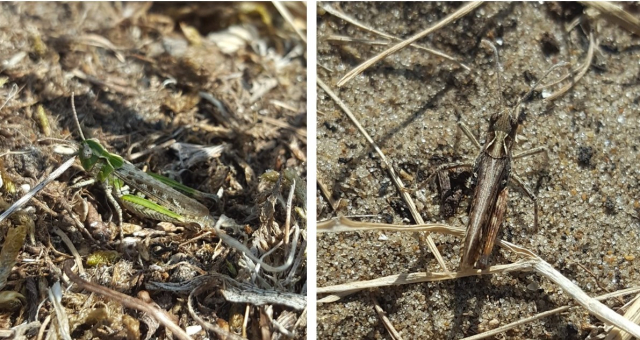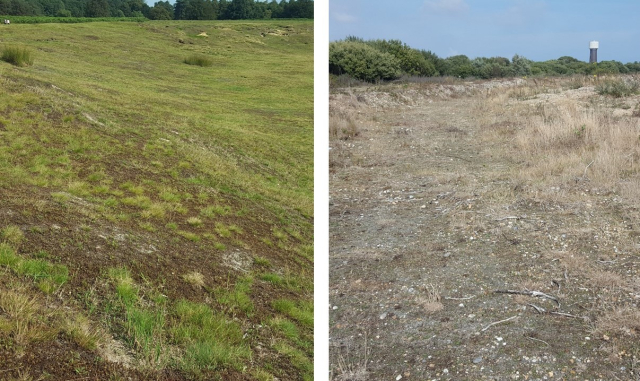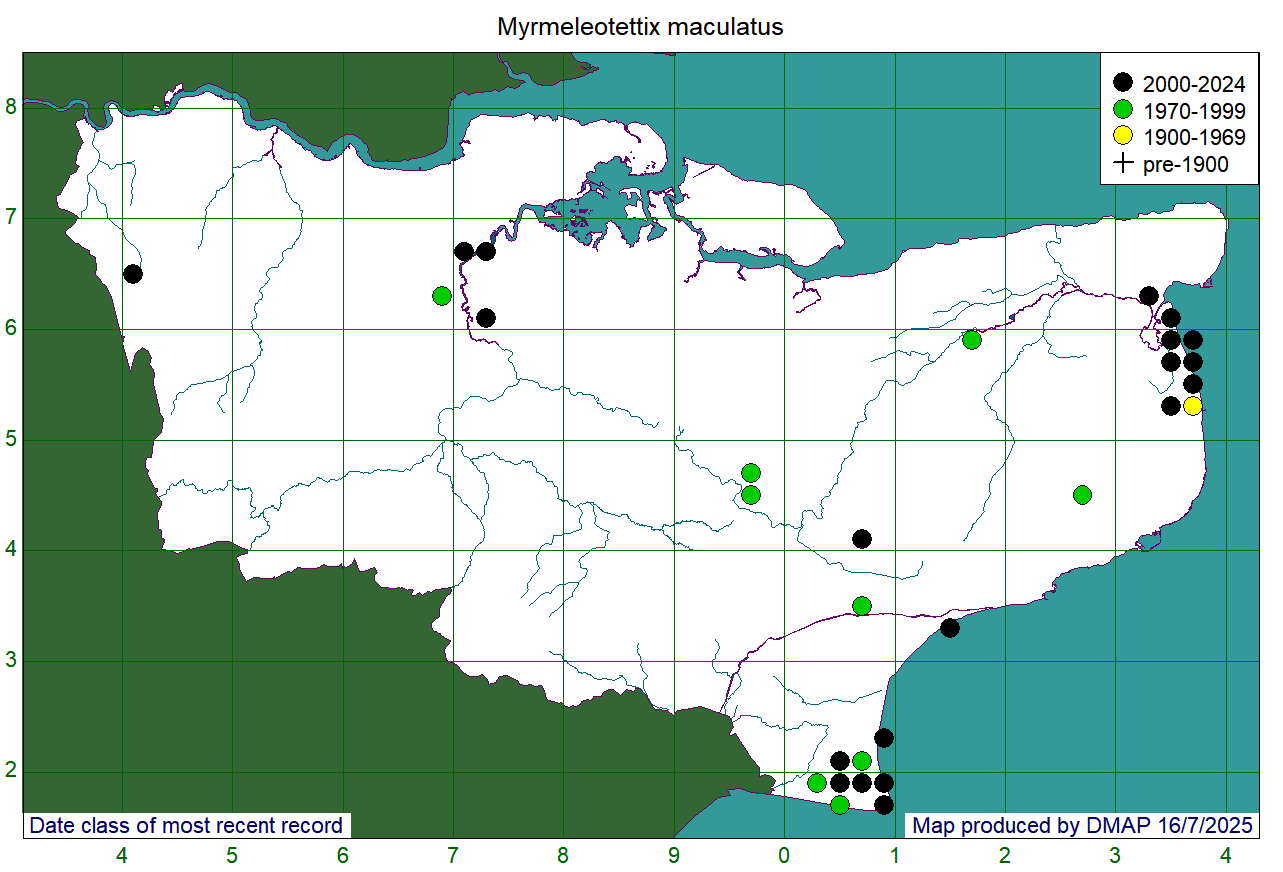
Mottled Grasshopper, female (left), and male (right). Photos R I Moyse.
This small species is very widespread in Britain, even being found in the Hebridean Islands. However, Mottled Grasshoppers are very dependent on exposure to direct sunlight in order to maintain an active body temperature, so that even in the warm south-east they are associated with short, very open grassland habitats. In Kent, Mottled Grasshoppers have a very restricted distribution, with the largest populations being on the dunes and sandy grassland of Sandwich Bay and the dry, open habitats of Dungeness (where they seem to prefer the better developed, though still short, swards away from the coarser shingle). Inland, there are very few locations, with recent inland records coming only from Hayes Common in South-east London, Culand Pits (and perhaps some other disused chalk quarries in the Medway Gap), and Hatch Park near Ashford.
Despite thorough searching, it has not been possible to find any populations on sites previously occupied at Hothfield Common, Old Park near Canterbury, or the Lydden-Temple Ewell Downs. This is likely to be due to habitat changes, as little or no suitably short sward remains at Lydden. At Hothfield, a period in the late 20th Century when the vegetation became more closed may have resulted in the species disappearing from the site, as today the site appears to contain eminently suitable habitat.
In Kent, the majority of Mottled Grasshoppers are on Sites of Special Scientific Interest, with the population at Betteshanger Country Park perhaps being the most significant on any undesignated site.
Map showing records at tetrad (2km x 2km square) resolution. Colour of dot shows date-class of most recent record for that tetrad.

Habitat of Mottled Grasshopper at Hatch Park, near Ashford (left) and Dungeness (right). Both sites are SSSI.

